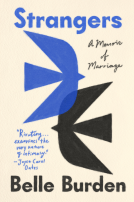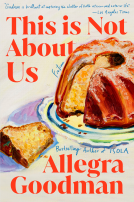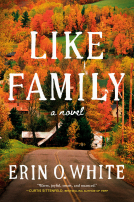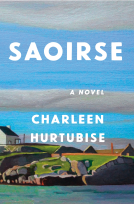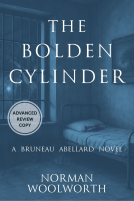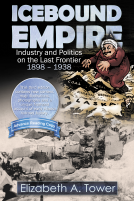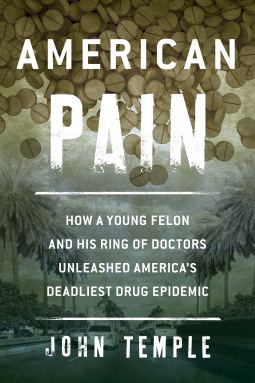
American Pain
How a Young Felon and His Ring of Doctors Unleashed America's Deadliest Drug Epidemic
by John Temple
This title was previously available on NetGalley and is now archived.
Send NetGalley books directly to your Kindle or Kindle app
1
To read on a Kindle or Kindle app, please add kindle@netgalley.com as an approved email address to receive files in your Amazon account. Click here for step-by-step instructions.
2
Also find your Kindle email address within your Amazon account, and enter it here.
Pub Date Sep 29 2015 | Archive Date Oct 06 2015
Rowman & Littlefield | Lyons Press
Description
* New York Post, “The Post’s Favorite Books of 2015”
* Suspense Magazine’s “Best True Crime Books of 2015”
* Foreword Reviews’ INDIEFAB Book of the Year in True Crime
* Publishers Weekly, Big Indie Book of Fall 2015
The king of the Florida pill mills was American Pain, a mega-clinic expressly created to serve addicts posing as patients. From a fortress-like former bank building, American Pain’s doctors distributed massive quantities of oxycodone to hundreds of customers a day, mostly traffickers and addicts who came by the vanload. Inked muscle-heads ran the clinic’s security. Former strippers operated the pharmacy, counting out pills and stashing cash in garbage bags. Under their lab coats, the doctors carried guns—and it was all legal… sort of.
American Pain was the brainchild of Chris George, a 27-year-old convicted drug felon. The son of a South Florida home builder, Chris George grew up in ultra-rich Wellington, where Bill Gates, Springsteen, and Madonna kept houses. Thick-necked from weightlifting, he and his twin brother hung out with mobsters, invested in strip clubs, brawled with cops, and grinned for their mug shots. After the housing market stalled, a local doctor clued in the brothers to the burgeoning underground market for lightly regulated prescription painkillers. In Florida, pain clinics could dispense the meds, and no one tracked the patients. Seizing the opportunity, Chris George teamed up with the doctor, and word got out. Just two years later Chris had raked in $40 million, and 90 percent of the pills his doctors prescribed flowed north to feed the rest of the country’s insatiable narcotics addiction. Meanwhile, hundreds more pain clinics in the mold of American Pain had popped up in the Sunshine State, creating a gigantic new drug industry.
American Pain chronicles the rise and fall of this game-changing pill mill, and how it helped tip the nation into its current opioid crisis, the deadliest drug epidemic in American history. The narrative swings back and forth between Florida and Kentucky, and is populated by a gaudy and diverse cast of characters. This includes the incongruous band of wealthy bad boys, thugs and esteemed physicians who built American Pain, as well as penniless Kentucky clans who transformed themselves into painkiller trafficking rings. It includes addicts whose lives were devastated by American Pain’s drugs, and the federal agents and grieving mothers who labored for years to bring the clinic’s crew to justice.
A Note From the Publisher
Advance Praise
—Melisa Wallack, Oscar-nominated co-writer of Dallas Buyers Club
—
“American Pain made me angrier with every page. Why? Because John Temple has so adeptly reported this story of how a handful of criminals and shady doctors in Florida profited from the poverty and addiction of the Appalachian South. Right from the riveting opening chapter, American Pain is rife with tension, conflict, and good journalism. Temple sets up a collision course between the George twins and their buddy Derik against a lone FBI agent, who suddenly realizes she doesn’t exactly have the law on her side. Every chapter is worth it.”
—James Higdon, national bestselling author of The Cornbread Mafia: A Homegrown Syndicate’s Code of Silence and the Biggest Marijuana Bust in American History
—
[Deadhouse is] fascinating … Temple invests his subjects with a warm humanity, providing insight into lives that are not nearly as glamorous as they appear in television dramas, but far more interesting.
— Pittsburgh Tribune-Review
[Deadhouse gives] an insider’s view of one of the country’s most misunderstood professions.
— Charleston Gazette
Writing evenly and efficiently, [in Deadhouse] Temple will enlighten fans of the CSI television shows. Teens, especially fans of CSI and Mary Roach’s Stiff, will find the perspectives from two college-age interns particularly involving.
— Booklist
Available Editions
| EDITION | Other Format |
| ISBN | 9781493007387 |
| PRICE | $26.95 (USD) |
Links
Average rating from 7 members
Featured Reviews
 Ellen S, Bookseller
Ellen S, Bookseller
Very interesting expose on Florida pill mills and their effect on narcotics addiction in Kentucky.
 Judith N, Educator
Judith N, Educator
This is an important book. It chronicles a "pill mill" in Florida that in the absence of oversight, was able to hire willing physicians and distribute vast quantities of opiates and benzodiazepams. As a physician who vividly remembers a conference sponsored by our state attorney general, to inform us that pain was a vital sign and vastly under-treated, and opiates were safer than we knew, and now sees the end result of the opiate epidemic, I never knew that the DEA allows the drug companies to produce massive quantities of opiates and could cut off the supply if they wanted, and that manufacturers of oxycontin were so successful at starting this epidemic, as they marketed their product. The felons who ran American Pain were told it was legal. The doctors who were employed there made a lot of money. As a central character said--someone should have said "no". The governor of Florida obstructed a prescription monitoring program, despite widespread abuse and patient deaths. If only this was remote history. Greed and lack of oversight started this, and the DEA keeps letting the companies manufacture the drugs. The story is both fascinating and horrifying and the problem is no where near to being solved.
 Book Trade Professional 282537
Book Trade Professional 282537
Note: This review was taken from my blog titled: “'American Pain' a Fascinating True Tale of Greed, Addiction, and Pill Mills" ~Daleen
If you don’t know anyone who’s been addicted to narcotic painkillers, you’re fortunate. Sadly, most of us do, or did, in the case of an addict whose addiction ended in death. It’s not a pretty topic—but it certainly is a crucial one.
Last fall I joined a local writer’s group made up largely of WVU professors. We email each other pages of our current project and meet once a month to provide feedback. It’s probably the best writer’s group I’ve ever been involved with, and I enjoy it immensely. One of the members, John Temple, was working on a nonfiction project he was under contract to finish. The early drafts of American Pain: How A Young Felon and His Ring of Doctors Unleashed America’s Deadliest Drug Epidemic really grabbed my attention. In part because I lost a sister to drug abuse, after she got hooked on those nasty painkillers, and also because I’ve had several surgeries myself and almost every single time I was sent home with a prescription for an opioid—which is a synthetic form of opium. Most of the time, I didn’t even need to fill the script. Other times, if I did, I rarely finished the pills, and flushed those that remained down the toilet.
Then, on Monday, August 31, 2015, I attended Temple’s book launch at the WVU Law School. There, a three-member panel composed of a psychologist, an attorney, and Temple, discussed the painkiller epidemic. I thought I knew how addiction worked, but I learned even more that night. For instance, the more painkillers you take, the more pain you have. That’s the word from Dr. Carl Sullivan, director of the West Virginia Addiction Training Institute for the last 25 years. Once the brain becomes accustomed to painkillers, any real or perceived pain seems even worse, which prompts the user to feel like he needs more pills at higher doses. It’s a vicious cycle that turns many people into addicts and eventually leads them to heroin.
Sullivan knows addicts. Prior to 1985, most of his patients were alcoholics. But in the 1990s, pharmaceutical companies began pushing drugs like OxyContin, saying that opioids were safe. They pushed them right into West Virginia, which has a large worker’s compensation population, due to such dangerous jobs as cutting timber and mining coal. At the same time, pain became the fifth vital sign doctors would check when examining patients. Because pain isn’t easy to quantify, and it’s impossible for doctors to confirm if a patient doesn’t have any, “doctors felt compelled to treat it,” Sullivan said. The result was a perfect storm here in Appalachia and elsewhere. “Opioids in West Virginia were just flowing like water,” he added.
We can thank Purdue Pharma for this change in the medical community. In the early 1990s, Purdue developed OxyContin, a controlled-release pill. It would replace MS Contin, one of their other drugs, used only to treat cancer patients. As Temple writes in American Pain, “Purdue wanted OxyContin to be prescribed to a much broader array of patients and for a longer period of time.” So Purdue began a major marketing campaign: first, they educated the American public about the problem of untreated pain. Then, they provided the solution—their new drug!
When West Virginia figured out what was going on with pill mills, Temple said, it became one of the first states to clamp down on the problem, which included patients who would doctor shop and buy far more painkillers than they needed. “The drugs may go away but not the addiction, so you go where the drugs are,” Temple said. Thus the reason West Virginia residents, like many people in southern states, began driving to Florida to get their fix.
The morning of the book launch, Sullivan treated 23 patients. All of them were addicted to opioids. These and other addicts have symptoms that include an intense craving for painkillers, being restless, sweating, vomiting, diarrhea, and thinking only about one thing: getting more drugs. “Without treatment, nothing good happens,” Sullivan said, “squalor, death.”
Not long ago he felt hopeless. Since then, new treatment programs are helping people addicted to painkillers. The clinical psychologist said he “feels more optimistic in 2015 than in a long time.”
Who would believe that this painkiller epidemic started, in large part, because of a construction worker–and felon–in Florida? The story of their American Pain clinics and the drug-dealing doctors who worked for them is amazing! Temple spent three years writing his book while on sabbatical from WVU, where he teaches journalism.
Not only is his writing crisp and clear, but Temple also cites fascinating numbers that help tell the story of this American epidemic. For instance, Temple says that during one period, Florida doctors bought nine times more oxycodone (the main ingredient in OxyContin and other painkillers) than doctors in other states. “That’s nine times more than the other forty-nine states combined,” he says. Records from the Drug Enforcement Agency show that in “one six-month period,” Temple says, “Florida doctors bought 41.2 million doses while every other physician in the country collectively purchased 4.8 million doses.” In fact, he says “four of [American Pain’s] clinic’s full-time doctors ranked among the top nine physician purchasers of oxycodone in the country.”
American Pain got its start, in part, from a health care industry that comprises 18-percent of the U.S. economy, according to Valerie Blake, a WVU associate law professor. That’s huge, and it’s climbing. When the pill mills were pumping out pills so fast almost no one could keep count, Florida then had virtually no laws regulating health care, Blake said. And the state certainly had no database to help track patients who were “doctor shopping.” Nor did it have any laws that stipulated who could or couldn’t own a medical clinic, she added.
Enter the George brothers, Chris and Jeff, and their construction worker buddy, Derik Nolan. Not even knowing what they were doing, they ran their little operation haphazardly, but over time they learned what the DEA looked for, when determining if a clinic could be busted for dispensing too many drugs. And they began implementing changes accordingly, until their company became a major player in the narcotic painkiller industry.
Astonishingly, though, when Chris George checked out the DEA’s own 2006 policy, he found that the federal agency would consider suspicious any doctor who “prescribes 1,600 [sixteen hundred] tablets per day of a schedule II opioid to a single patient,” Temple wrote. With numbers that high, it’s clear to see why the George brothers and Nolan thought they could get away with what they were doing.
American Pain is an important book about an epidemic that is far from over. Not only did Temple dig into the DEA’s own puzzling actions of allowing pharmaceutical firms to manufacture more pills than ever, but he did so while weaving together a powerful and sometimes even funny story about the three Florida construction workers who became so wealthy and powerful they were mafia bosses in their own right. Bosses the FBI brought down, when a female agent named Jennifer Turner took an interest in the construction workers’ clinics. Turner and her fellow agent, Kurt McKenzie, worked for more than a year to bring the case to trial. According to Temple, McKenzie says the only “other investigation that took the same toll on him . . . was the terrorist attacks of September 11, 2001.”
There is one other important thread Temple wove throughout his book: the victims of American Pain’s pill mill practices, many of whom died. Like the Racine, W.Va., man, who smashed his Camaro into a pickup truck while high on oxy. Or the Tennessee man who died in a Boca Raton motel, two days after being treated at one of American Pain’s clinic.
But Temple’s story about Stacy Mason, a young concrete worker from Kentucky who drove to Florida to get oxy so he could cope with back pain from a serious vehicle accident that made it impossible for him to work, will leave you longing for justice for all the victims of this terrible epidemic.
Many times, Temple got in his own car and drove up hollers in backwoods Kentucky to interview the Mason family for this book. Their story, like those of the other addicts Temple writes about, will make you angry that so many senseless deaths have occurred because of greedy pharmaceutical companies. Be prepared to settle in for a long read, because American Pain is an addictive read. And it will captivate you, making it almost impossible to put down.
Readers who liked this book also liked:
Norman Woolworth
General Fiction (Adult), Historical Fiction, Mystery & Thrillers

